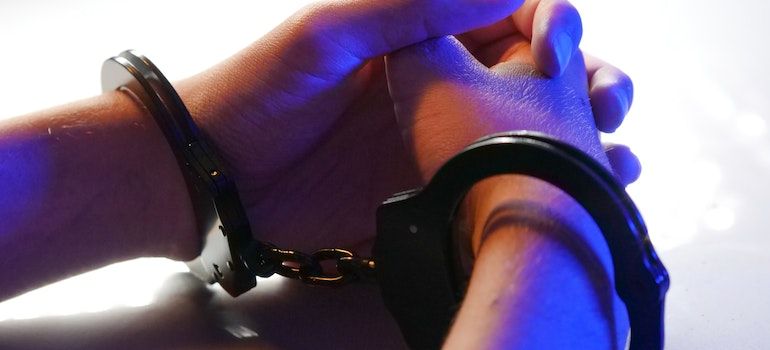What Is Tweaking and Why Is It Dangerous?
Get Help Now
Have you ever wondered what is tweaking? If so, you’re not alone. Tweaking is often associated with substance abuse, specifically stimulants like methamphetamine and amphetamines. However, it’s not just another word for drug use; it represents a risky phase that can have severe consequences for individuals and society. In this article, we will try shedding light on the harrowing effects of tweaking and its inherent dangers. Whether you or someone you know is affected by this, understanding the gravity of the situation is the first step toward finding help and recovery. We will also touch upon available detox programs here in Florida, a state that has seen its share of substance abuse challenges. Let’s embark on this informative journey to unravel what tweaking is and why it is dangerous.
Tweaking Explained
Tweaking, regarding substance abuse, is a term that goes beyond casual drug use. It represents a critical phase in the cycle of addiction, particularly associated with the consumption of stimulants like methamphetamine or amphetamines. At this stage, individuals exhibit specific behaviors and characteristics that set them apart from recreational drug users.
Distinct Behavioral Patterns
Tweaking is marked by a set of distinct behavioral patterns, including:
- Intense Drug Binging: Tweaking individuals often engage in prolonged drug binging, consuming large quantities of the substance over an extended period, sometimes days on end.
- Compulsive Behavior: They become obsessively focused on tasks, often trivial, such as cleaning or disassembling and reassembling objects.
- Hyperactivity and Restlessness: This phase is characterized by heightened agitation, restlessness, and extreme energy levels.
- Repetitive and Paranoid Thoughts: Tweaking individuals frequently experience repetitive and paranoid thoughts, often convinced that someone is out to get them.

Physical Changes
Physiologically, tweaking takes a toll on the body. Key physical signs include:
- Exhaustion: Despite the seemingly boundless energy, tweaking individuals eventually become utterly exhausted.
- Deterioration of Physical Appearance: Prolonged tweaking can result in a significant deterioration of physical appearance, marked by severe weight loss, poor hygiene, and unhealthy skin.
- Jaw Clenching and Tooth Grinding: Known as bruxism, this jaw clenching and tooth grinding is a common physical manifestation during this phase.
How It Differs from Regular Substance Use
To truly grasp what tweaking is and why it is dangerous, it’s crucial to distinguish it from typical substance use. While recreational drug use may involve occasional and controlled consumption, tweaking represents a reckless, uncontrolled, and self-destructive pattern.
Loss of Control
Unlike recreational users who can moderate their intake, tweaking individuals lose control over their drug consumption. They become engulfed in a continuous cycle of using and seeking the drug, often to the detriment of their health, relationships, and responsibilities. This loss of control underscores the importance of seeking professional help, including drug detox Florida, to break free from addiction and regain a semblance of a fulfilling, healthy life.

Escalation of Risk
Tweaking is not a phase of experimentation or occasional indulgence. It is a stage where the risks escalate exponentially. The behaviors and intensity of drug use during tweaking can lead to severe physical and mental consequences in the short and long term.
Need for Intervention and Support
Recognizing the signs of tweaking is essential, as it can be a cry for help. Strategies for intervention and support must be employed promptly to guide affected individuals toward the path of recovery. In the later sections of this article, we will delve deeper into the physical and mental effects of tweaking, its inherent dangers, and available treatment options to aid in the recovery process.
The Physical and Mental Effects of Tweaking
Tweaking isn’t a simple deviation from ordinary drug use. It’s a dangerous spiral that takes a devastating toll on the body and mind. This section will delve into the harsh reality of this behavior’s physical and mental consequences. Understanding these effects is essential in comprehending the gravity of tweaking, why it is dangerous, and why seeking help is imperative.
The Physical Toll
As we’ve established, Tweaking is far from a benign phase of drug use. It inflicts a substantial physical toll on the individual’s body, leading to various health issues and complications.
Cardiovascular Stress
One of the most immediate and noticeable physical effects of tweaking is its significant strain on the cardiovascular system. Using stimulants like methamphetamine can lead to elevated heart rates, high blood pressure, and irregular heart rhythms. That heightened stress on the heart can increase the risk of heart attacks and other cardiovascular problems, even in young individuals.
Sleep Deprivation and Exhaustion
Often, tweaking involves days of uninterrupted drug use, inevitably leading to severe sleep deprivation. This chronic lack of sleep has a profound impact on the body. It weakens the immune system, impairs cognitive functions, and contributes to feelings of exhaustion and fatigue.

Nutritional Deficiencies
During a tweaking episode, individuals are typically too preoccupied with drug use to focus on proper nutrition. This neglect can result in malnutrition, severe weight loss, and deficiencies in essential vitamins and minerals, further deteriorating their physical health.
The Mental Consequences
Tweaking doesn’t just affect the body; it also takes a significant toll on mental health. Intense, prolonged drug use can severely affect cognitive functions and emotional stability.
Psychological Distress
One of the hallmark effects of tweaking is the development of psychological distress. Users often experience extreme paranoia, hallucinations, and delusional thinking. They may become convinced that others are plotting against them, leading to erratic and sometimes aggressive behavior.
Cognitive Impairments
Prolonged tweaking can result in cognitive impairments. Users may struggle with memory problems, impaired decision-making abilities, and difficulty concentrating. These cognitive deficits can persist even after the tweaking episode has ended.
Risk of Dual Diagnosis
The co-occurrence of substance abuse and mental health disorders, known as dual diagnosis, is common among individuals who engage in tweaking. The intense drug use can exacerbate underlying mental health conditions or trigger new ones. Recognizing and addressing these dual diagnoses is crucial in the path to recovery.

The Dangers of Tweaking
Tweaking is a perilous journey into the abyss of substance abuse, and its dangers are as real as they are profound. In this section, we will unravel the immediate risks and long-term consequences associated with this self-destructive behavior. Understanding these dangers is essential to grasp the full scope of what is tweaking and why is it dangerous – a journey that takes us into the personal struggles of addiction and the broader impact on society.
Immediate Risks
Tweaking, as we’ve explored, is a dangerous phase of substance abuse, and it comes with a host of immediate dangers that can have devastating consequences.
Overdose
One of the most pressing dangers during tweaking is the risk of overdose. As individuals consume increasingly higher doses of stimulants to maintain their high, they can easily reach a point where the body can no longer tolerate the drug. Overdose can lead to life-threatening conditions such as heart attacks, seizures, and organ failure, underscoring the urgent need for methamphetamine addiction treatment and comprehensive intervention strategies.
Accidents and Injuries
The heightened agitation, paranoia, and impaired judgment associated with tweaking can lead to accidents and injuries. Individuals might engage in reckless behaviors like driving under the influence, leading to accidents that can cause harm to themselves and others.
Long-Term Consequences
Tweaking isn’t just a short-lived, intense experience; it can have lasting consequences that profoundly impact an individual’s life.
Chronic Health Issues
Prolonged use of stimulants like methamphetamine can lead to various chronic health problems. These may include heart disease, lung issues, dental problems (often called “meth mouth”), and cognitive deficits that persist long after drug use has ceased.
Legal Problems
Tweaking leads to legal issues. Engaging in illicit drug use, theft, and other criminal activities to support their habit can result in arrests and a criminal record, further complicating an individual’s life.

Relationships and Isolation
Tweaking can strain relationships to the breaking point. Friends and family often become frustrated and alienated by the user’s erratic behavior and obsession with the drug. This isolation can exacerbate the individual’s addiction and mental health problems, making it all the more crucial to consider seeking professional help through an inpatient drug detox center Florida or other specialized treatment facilities. These centers offer a structured environment that not only aids in detoxification but also provides counseling and therapy to address the underlying causes of addiction while offering a respite from the destructive isolation of tweaking.
Risks to Others: Not Just Self-Destructive Behavior
The dangers of tweaking extend beyond the individual engaging in drug use. The impact on society as a whole is a matter of concern.
Community Impact
Tweaking contributes to the burden on public resources, including healthcare, social services, and law enforcement. Communities suffer when individuals engage in self-destructive behaviors, leading to increased crime rates and strained emergency services.
Economic Consequences
The societal cost of tweaking is substantial. The economic consequences of addiction, including the cost of healthcare, lost productivity, and increased crime rates, are a heavy burden that affects everyone.
Seeking Help
Seeking help is the crucial turning point in the battle against tweaking and stimulant addiction. In this section, we’ll explore how recognizing the signs, understanding available treatment options, including methadone detox Florida, and the perils of delaying treatment can make all the difference in helping individuals escape the grip of this destructive behavior. Recovery is possible, and it begins with the decision to seek assistance.
Recognizing the Signs
Seeking help for tweaking is a critical step towards recovery. However, recognizing the signs of this destructive behavior can be challenging, as individuals often hide their addiction. Here’s how you can identify when someone may require assistance.
Drastic Changes in Behavior
Tweaking individuals undergo dramatic changes in their behavior. They may become increasingly paranoid, irritable, and detached from reality. Pay attention to these shifts.
Physical Signs
Observe for physical signs such as rapid weight loss, dilated pupils, dental issues, and poor hygiene. These can be indicators of tweaking.
Available Treatment Options
Thankfully, treatment options are available for those struggling with tweaking and stimulant abuse, extending beyond rehabilitation programs.
Outpatient Counseling
Outpatient counseling can be an effective treatment option for individuals with less severe cases of tweaking or those who cannot commit to inpatient rehabilitation. It offers regular therapy sessions and support while allowing individuals to maintain some level of daily functioning.
Support Groups
Support groups, such as Narcotics Anonymous (NA) or Crystal Meth Anonymous (CMA), provide a community of individuals who have experienced similar struggles. These groups offer a safe space to share experiences, gain encouragement, and maintain accountability in the recovery process. The power of social connections in addiction recovery cannot be overstated. Being part of a supportive community can combat the isolation often felt during the journey to sobriety. Interacting with peers who understand the challenges and triumphs of overcoming addiction fosters a sense of belonging and reinforces the commitment to change. In these groups, individuals receive guidance and become sources of inspiration for others seeking to reclaim their lives from the clutches of addiction.

Cognitive Behavioral Therapy (CBT)
CBT is a widely recognized therapy technique that can help individuals identify and change negative thought patterns and behaviors associated with addiction. It equips individuals with coping strategies to manage cravings and avoid relapse.
Medical Intervention
In severe cases of stimulant addiction, medical intervention may be necessary to manage withdrawal symptoms and cravings. Physicians can prescribe medications that reduce the intensity of withdrawal and improve the chances of successful recovery.
Holistic Approaches
Some individuals may benefit from holistic approaches, such as yoga, meditation, and acupuncture, which can complement traditional treatment methods and promote overall well-being during recovery.
Dual-Diagnosis Treatment
Dual-diagnosis treatment is crucial for those with co-occurring mental health disorders and addiction issues. This approach addresses both conditions simultaneously, improving the likelihood of lasting recovery.
In Conclusion
Understanding what is tweaking and why it is dangerous is pivotal in recognizing the severity of this self-destructive behavior. Tweaking, associated with stimulant abuse, poses immediate and long-term physical and mental dangers, highlighting the need for timely intervention and support. Recognizing signs, exploring available treatment options, and acknowledging the significance of social connections in addiction recovery can be transformative steps in overcoming addiction. Delaying treatment for tweaking is perilous, but recovery is attainable with the right resources and support. Please contact us if you or someone you know is grappling with tweaking and seeking help. Your journey toward recovery begins with the decision to seek assistance and the commitment to a healthier, brighter future.